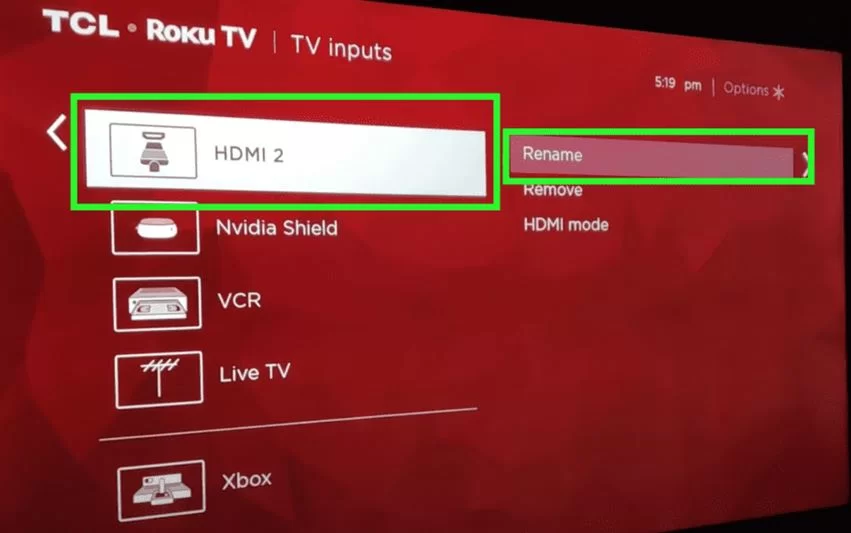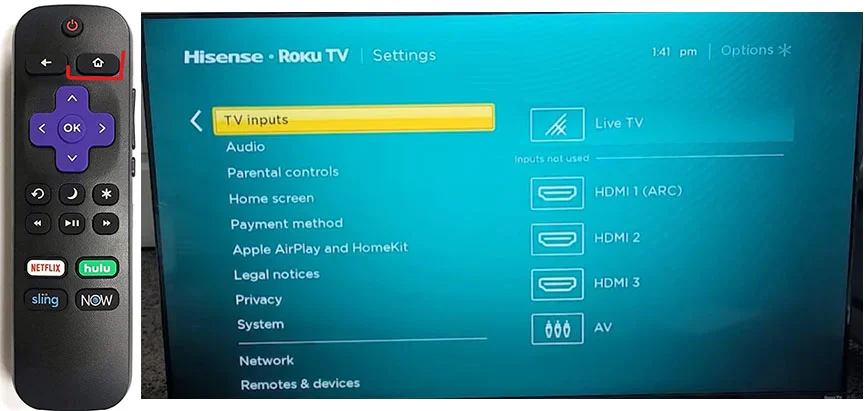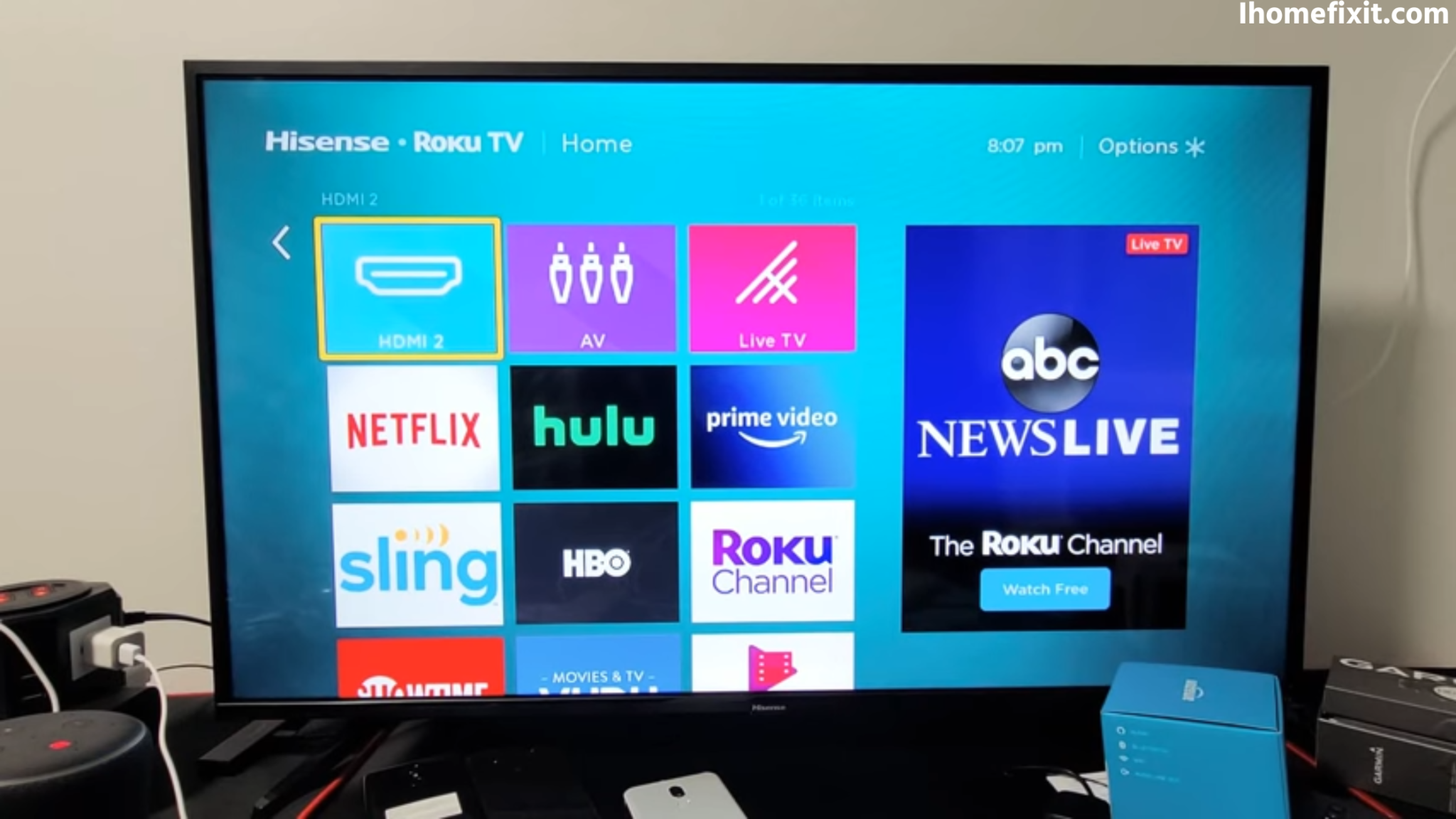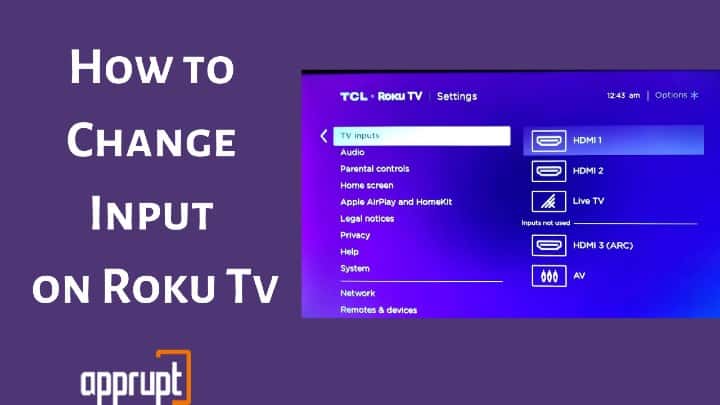How To Change Source On Roku Tv

Imagine settling into your favorite armchair after a long day, remote in hand, ready to unwind with a captivating movie or catch up on the latest news. But instead of the familiar glow of your preferred streaming service, you're greeted by a blank screen or a channel you never watch. The culprit? The wrong input source. It’s a scenario familiar to many, a minor hiccup that can momentarily disrupt the tranquility of an evening.
This article provides a comprehensive guide to effortlessly changing the source on your Roku TV. Whether you're switching from your cable box to your gaming console, or simply trying to access a different HDMI input, mastering this simple skill will ensure seamless entertainment experiences.
Understanding Input Sources on Your Roku TV
Modern televisions are multifaceted devices, capable of connecting to a wide array of peripherals. These connections, often via HDMI, component, or composite cables, are what we refer to as input sources.
Your Roku TV is designed to easily manage these connections, allowing you to switch between them with minimal fuss.
The Importance of Input Selection
Selecting the correct input is crucial for viewing content from your connected devices. If your Blu-ray player is connected to HDMI 1 but your TV is set to HDMI 2, you won't see any picture.
Understanding this basic principle is the first step in troubleshooting any display issues.
Navigating the Roku TV Interface
Roku TVs are known for their user-friendly interface. This design philosophy extends to input selection, making the process relatively straightforward.
Let's explore the different methods you can use to change the source on your device.
Using the Roku Remote
The most common and convenient method is using your Roku remote. The remote provides direct access to the input settings.
Here's a step-by-step guide:
- Press the Home button on your Roku remote. This will take you to the main Roku menu.
- Navigate to the "Settings" option. This is usually represented by a gear icon.
- Select "TV inputs." This option may also be labeled as "Inputs" or something similar, depending on your Roku TV model.
- Choose the desired input source from the list displayed. The list will show all available inputs, such as HDMI 1, HDMI 2, Antenna TV, etc.
- Press the OK button on your remote to confirm your selection. Your TV should now switch to the chosen input source.
This is the quickest method for switching inputs, especially if you frequently change between different devices.
Using the Roku Mobile App
Did you know that Roku offers a mobile app that mirrors many of the functions of your physical remote? This can be a lifesaver if you've misplaced your remote or prefer using your smartphone.
Here's how to change the input using the Roku Mobile App:
- Download and install the Roku Mobile App from your device's app store (Google Play Store for Android or App Store for iOS).
- Connect the app to your Roku TV. Make sure your smartphone and Roku TV are on the same Wi-Fi network. The app will typically detect your Roku TV automatically.
- Navigate to the "Remote" tab within the app.
- Look for an "Inputs" or "Source" button. The location and appearance of this button may vary slightly depending on the app version and your Roku TV model.
- Select the desired input source from the list.
The app offers the same functionality as the physical remote, including volume control, playback controls, and the ability to launch apps.
Using the TV's Physical Buttons
In some cases, you might need to change the input source without using a remote or the mobile app. Most Roku TVs have physical buttons located on the TV itself, usually on the side or bottom.
These buttons often include a power button, volume controls, and an input/source button.
- Locate the physical buttons on your Roku TV.
- Press the "Input" or "Source" button repeatedly until you reach the desired input source. The TV will cycle through the available inputs.
- Stop when the desired input is displayed.
This method is less convenient than using the remote or the app, but it can be a useful backup option if your remote is lost or malfunctioning.
Troubleshooting Common Input Issues
While changing the input source is generally straightforward, you might occasionally encounter problems.
Here are some common issues and how to address them:
No Picture or Sound
If you've selected the correct input but still have no picture or sound, double-check the connections between your device and the TV.
Ensure the cables are securely plugged into both the TV and the source device. Try a different cable to rule out a faulty connection.
Incorrect Input Labeling
Sometimes, the input sources might be labeled incorrectly. For example, HDMI 1 might actually be connected to your Blu-ray player, but the TV labels it as "Cable Box."
You can rename the inputs in the Roku TV settings to accurately reflect the devices connected to each port. This will prevent confusion in the future.
Device Not Recognized
In some cases, your Roku TV might not automatically recognize a newly connected device. Try restarting both the TV and the device to see if that resolves the issue.
You may also need to manually configure the input settings for the device, such as selecting the correct resolution or audio output format. Consult your device's manual for instructions.
Optimizing Your Roku TV Experience
Beyond simply changing the input source, there are other ways to enhance your Roku TV experience.
Consider these tips for a more seamless and enjoyable viewing experience:
Organizing Your Inputs
Rename your inputs to easily identify which device is connected to each port. This will prevent you from accidentally selecting the wrong input.
You can also reorder the inputs in the list to prioritize the ones you use most frequently.
Using HDMI-CEC
HDMI-CEC (Consumer Electronics Control) allows you to control multiple devices connected via HDMI with a single remote.
If your devices support HDMI-CEC, you can use your Roku remote to control the power, volume, and playback of your Blu-ray player or soundbar. Enable HDMI-CEC in the Roku TV settings.
Regular Software Updates
Roku regularly releases software updates that improve performance, add new features, and fix bugs.
Ensure your Roku TV is always running the latest software to take advantage of these improvements. You can manually check for updates in the settings menu.
The Ever-Evolving World of Home Entertainment
The world of home entertainment is constantly evolving, with new devices and technologies emerging all the time.
Mastering the basics of input selection on your Roku TV will ensure that you can seamlessly integrate these new technologies into your home entertainment setup.
From gaming consoles and streaming devices to Blu-ray players and cable boxes, understanding how to switch between input sources is a fundamental skill for any modern TV user.
Conclusion: Taking Control of Your Viewing Experience
Changing the input source on your Roku TV is a simple yet essential skill that unlocks the full potential of your home entertainment system. By mastering the techniques outlined in this article, you can effortlessly switch between your favorite devices and enjoy a seamless viewing experience.
So, the next time you find yourself staring at a blank screen, remember these steps and take control of your entertainment. With a few simple clicks, you'll be back to enjoying your favorite content in no time.
Ultimately, knowing how to navigate your Roku TV and manage its inputs empowers you to create a personalized and immersive home entertainment experience that caters to your individual needs and preferences. Happy viewing!

![How To Change Source On Roku Tv How to Change Input on Roku TV [Easy Way] - Alvaro Trigo's Blog](https://alvarotrigo.com/blog/assets/imgs/2023-07-18/setup-chosen-roku-tv-input.jpeg)
![How To Change Source On Roku Tv How to Change Input on Roku TV Quickly [with or without Remote]](https://www.boostvision.tv/wp-content/uploads/2023/09/1695196667-change-input-on-roku-tv.webp)
![How To Change Source On Roku Tv How to Change Input on Roku TV [Easy Way] - Alvaro Trigo's Blog](https://alvarotrigo.com/blog/assets/imgs/2023-07-18/set-default-roku-input-navigate-system.jpeg)


![How To Change Source On Roku Tv How to Change Input on Roku TV Quickly [with or without Remote]](https://www.boostvision.tv/wp-content/uploads/2023/09/1695196858-home-button-504x1024.webp)

![How To Change Source On Roku Tv How to Change Input on Roku TV [Easy Way] - Alvaro Trigo's Blog](https://alvarotrigo.com/blog/assets/imgs/2023-07-18/default-roku-input-power-on.jpeg)
![How To Change Source On Roku Tv How to Change Input on Roku TV [Easy Way] - Alvaro Trigo's Blog](https://alvarotrigo.com/blog/assets/imgs/2023-07-18/roku-hdmi-cec-setup.jpeg)
![How To Change Source On Roku Tv How to Change Input on Roku TV [with or without Remote]](https://www.ytechb.com/wp-content/uploads/2024/09/How-to-Change-Input-on-Roku-TV-1.webp)







